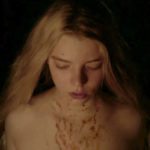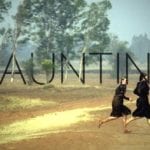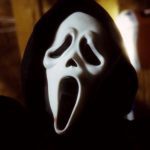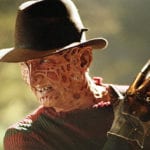 Mysteries
Mysteries  Mysteries
Mysteries  Creepy
Creepy 10 Scary Tales from the Middle Ages That’ll Keep You up at Night
 Humans
Humans 10 One-of-a-kind People the World Said Goodbye to in July 2024
 Movies and TV
Movies and TV 10 Holiday Movies Released at Odd Times of the Year
 Politics
Politics 10 Countries Where Religion and Politics Are Inseparable
 Weird Stuff
Weird Stuff 10 Freaky Times When Famous Body Parts Were Stolen
 Miscellaneous
Miscellaneous 10 Interesting Things Manufacturers Stopped Making and Why
 Gaming
Gaming 10 Funny Tutorials in Games
 History
History 10 Fascinating Little-Known Events in Mexican History
 Facts
Facts 10 Things You May Not Know about the Statue of Liberty
 Mysteries
Mysteries 10 Devastating Missing Child Cases That Remain Unsolved
 Creepy
Creepy 10 Scary Tales from the Middle Ages That’ll Keep You up at Night
 Humans
Humans 10 One-of-a-kind People the World Said Goodbye to in July 2024
Who's Behind Listverse?

Jamie Frater
Head Editor
Jamie founded Listverse due to an insatiable desire to share fascinating, obscure, and bizarre facts. He has been a guest speaker on numerous national radio and television stations and is a five time published author.
More About Us Movies and TV
Movies and TV 10 Holiday Movies Released at Odd Times of the Year
 Politics
Politics 10 Countries Where Religion and Politics Are Inseparable
 Weird Stuff
Weird Stuff 10 Freaky Times When Famous Body Parts Were Stolen
 Miscellaneous
Miscellaneous 10 Interesting Things Manufacturers Stopped Making and Why
 Gaming
Gaming 10 Funny Tutorials in Games
 History
History 10 Fascinating Little-Known Events in Mexican History
 Facts
Facts 10 Things You May Not Know about the Statue of Liberty
Top Ten Ghosts and Cryptids Based on Witches
Among other magical abilities, witches in history have long been thought to consort with the dead. Be it with a Ouija Board at the height of the spiritualism movement or via the old, alleged maleficium, it’s easy to put witches and ghosts in a similar, mystical camp. However, every now and then, supposed witches do a tad bit more than speak to spirits; they sometimes become spirits themselves, or so some people claim.
The following is a list of the ten most famous witches to become ghosts or cryptids, not only being figures of folklore like the Baba Yaga or Jenny Greenteeth but who also, as some claim, have been sighted to this day.
Related: 10 Unusual Male Witch Trials From Europe
10 Mother Shipton and the Petrifying Well
The tale of Ursula Sontheil, also known as Mother Shipton, begins in 1488 in Knaresborough, North Yorkshire, England. Born to a fifteen-year-old mother, Agatha Sontheil, out of wedlock, Ursula was raised by her mother alone. The two lived in a cave for two years before Agatha was taken to a nunnery, leaving Ursula to be raised by the local Abbot of Beverly.
Ursula, however, was born to look exactly like one would imagine a stereotypical witch to look: warts, nose, and all. So she made very few friends and would end up spending most of her time in the woods and around the cave, studying plants and old cunning women’s traditions. She would develop a reputation as a successful folk healer prophetess and live to be 73.
Mother Shipton’s cave has also garnered a haunting reputation. A nearby well, known as the Petrifying Well, has an odd tendency to turn most objects left there over three or so months into stone. Despite science tackling that mystery, chalking it up to a high mineral content, many claim to see a shadowy, witch-like figure prowling around the mouth of the cave, often disappearing as soon as it appears.[1]
9 Barbara Zdunk
Barbara Zdunk holds the intriguing title of “The Last Witch to Be Burned at the Stake in Europe.” However, this would not be her only alleged crime. The city of Reszel in Poland was under attack by a serial arsonist at the beginning of the 19th century, and in 1806, the entire town was burned to the ground. Barbara Zdunk, a maid at the time, was charged with the crime, though most suspect that she was a victim of a slander campaign. Though she was also pinned with practicing magic, witchcraft was not a crime in what was then Prussia, but it was used as evidence nonetheless. Zdunk was executed on August 21 at Szubienica Hill, outside of Reszel.
As such, it is within the Reszel Castle that many claim to see the spirit of Barbara Zdunk. It is in this castle’s dungeons that the alleged witch was first imprisoned and tortured over the course of four years. She was even sexually assaulted and gave birth twice during her imprisonment, though no one knows what became of her children. Some claim to see her wandering spirit haunt the castle’s dungeons and often report blood-curdling screams when no one (alive) is there to make them. Ghost Hunters International even visited Reszel Castle and was subject to a smattering of poltergeist moments.[2]
8 Marie Laveau
Though not necessarily a witch, Marie Laveau is often referred to as “The Voodoo Queen of New Orleans” for her reputation as a wise priestess in the Voodoo religion and as a pillar of the New Orleans black community. Voodoo stems from west African beliefs that developed prominence in the Caribbean and other areas, including New Orleans. Marie Laveau, born around the turn of the 19th century, had a deep ancestry involving many prominent Voodoo priestesses and learned much about the religion under the tutelage of a Dr. John (Bayou John) from Senegal.
Marie Laveau would live a long, influential life, passing away from old age on June 15, 1881. Laveau is buried at St. Louis Cemetery No. 1 and still receives gifts and spiritual adornments to this day. The cemetery, however, is not the haunted location where Marie Laveau’s spirit is sometimes spotted. Instead, her home, on St. Anne Street, boasts that title, even though the building was torn down and rebuilt in 1903.
Many report seeing the spirit of the Voodoo Queen walking peacefully down St. Anne Street, wearing a white dress and her tingon headdress. She is also said to haunt rooms within the new building, which is used nowadays for a vacation rental. People also claim to hear mysterious chanting and drumming coming from a completely empty street.[3]
7 The Soucouyant
The Soucouyant treads a thin line between “vampire” and “witch,” but this Caribbean spirit is described as an old hag often enough to qualify her for this list. The Soucouyant is a legend prominent in southern Caribbean nations, namely Trinidad and Tobago, and is actually a name for a witch-like entity, as opposed to a singular witch. According to legend, she is able to strip off her skin at night and transform into a giant fireball, which often visits people’s homes while they’re asleep to suck their blood, supposedly leaving blue-black marks.
The Soucouyant can be stopped, however. By sprinkling salt or pepper on her discarded skin, it would burn her to death when she returned. One can also place a bowl of rice on their front doorstep, forcing her to count each grain before she can enter.
Despite the Soucouyant appearing to be more of a legend than a cryptid, she has been allegedly sighted recently. However, it is considered quite taboo to talk about them, making reports a tad bit scarce. Nevertheless, people report seeing balls of fire flying like paranormal orbs of light, sometimes with a visible face inside.[4]
6 Hauntings at Proctor’s Ledge
Perhaps the initial incident that took place is far more famous than any hauntings that have lingered into the modern era, but Salem definitely has its fair share of hauntings.
Though it’s hard to actually claim that any victims of the infamous Salem Witch Trials were bonafide, practicing witches, it is safe to say that many institutions have reports of ghosts. And a lot of the alleged spirits seem to be people from around 1692 when the trials started—if the descriptions are anything to go by.
In 1921, historian Sidney Perley discovered the location of “Gallows Hill,” where the executions took place, and found said location to be at the foot of Proctor’s Ledge, a hill in Salem. According to Massachusetts law, it was illegal to bury the executed “witch” in consecrated ground, so most of the victims of the Salem Witch Trials were “buried” near the execution site in a mass grave. Although, some family members may have removed their accused family member under the cover of darkness for burial elsewhere.
To this day, a mysterious Lady in White is often seen wandering Proctor’s Ledge and other Salem locations. However, no one has yet identified her as a specific victim of the famed trials. In addition, faint wailing and moaning are often reported at the location, as well as the ever-common cold spots and floating orbs that accompany ghostly locations.[5]
5 Agnes Sampson
Agnes Sampson, also known as the Wyse Wyff of Keyth, was a prolific cunning woman from Scotland who tragically suffered her demise at the North Beswick Witch Trial in 1591. The historic Holyroodhouse Palace in Edinburgh was where Sampson was tried and executed, and according to legend, it still serves as her place of residence to this day.
In life, Agnes Sampson was a widow with two children, who made a living helping the people of Scotland with the folk remedies she had learned. Unfortunately, though, a maidservant named Geillis Duncan was convicted of witchcraft and started confessing about other witches she knew, similar to how the Salem Witch Trials panned out. Sampson was regrettably a victim of Duncan’s admission. As a result, Sampson was imprisoned and tortured for a few months before she was garroted and burned on January 28.
To this day, a phantom matching Agnes Sampson’s description has been seen wandering Holyroodhouse Palace, often apparating with her torture wounds fully visible. She is often witnessed either slowly wandering the halls or acting out the final scenes of her life.[6]
4 Janet Douglas
Janet Douglas was another victim of the various witch trials that plagued Scotland, though Douglas would meet her fate more than fifty years before Agnes Sampson, being burned at the stake on July 17, 1537. Also known as Lady Glamis, Douglas is said to be spotted at Glamis Castle to this day, prowling its halls as an ethereal phantasm.
However, in contrast to Sampson, Douglas’s accusations came not from her reputation as a folk witch but from her relation to Sir James Douglas, a lieutenant to Robert the Bruce and an enemy of King James V of Scotland. Out of contempt for the whole Douglas family, Janet Douglas was convicted of treason, poisoning her husband, and witchcraft. It took no time at all for the Lady Glamis and her sixteen-year-old son to be imprisoned and tortured, and it is alleged that her son was forced to watch his mother burn to death.
Though she was executed at Edinburgh Castle, Douglas allegedly manifests at her original home of Glamis Castle, where she is also known as the Grey Lady. She is often spotted in garb sporting the color of her new namesake, and she is most commonly sighted at the castle’s chapel.[7]
3 The Aswang
This next legend comes from the Philippines and also blurs the line between witch and vampire, much like the Soucouyant. Although it typically takes the form of a woman by day, the Aswang is a figure in Philippine folklore who has the ability to shapeshift into large dogs, cats, birds, and sometimes werewolves, all so that they can hunt humans at night. The only way to discern if someone is an Aswang is if their eyes reflect their beholders upside-down or if a special painting crafted by an albularyo, a Filipino folk healer, starts to boil whenever the Aswang draws near.
In order to consume its victims, an Aswang is said to perch on the roof of people’s homes and move its long, prehensile tongue toward small openings in a victim’s home to probe the scene before breaking in, eating them, and replacing the corpse with a mannequin made of wood and plants. To this day, many in the Philippines report seeing an odd cryptid preying on people’s roofs.[8]
2 La Lechuza
This next entry on the list is less canine and a tad bit more avian. La Lechuza’s folkloric roots can be traced back to Mexico, and her name can even be directly translated as “the owl,” for she is often spotted as a giant owl with a woman’s face.
La Lechuza’s origins stem from a nameless woman being convicted of practicing black magic by those in her village, who immediately murdered her. This supposed bruja, or variation on the witch in Mexico, came back as the aforementioned terrifying, seven-foot-tall bird lady, allegedly lingering to this day, appearing as an older hag by day and transforming into her bird form at night.
People report witnessing La Lechuza perching in high trees at night, either emulating a baby’s cry to attract potential victims or simply screeching like an owl should anyone approach. She’s also known to swoop after cars, attempting to run them off the road.[9]
1 The Bell Witch
The Bell Witch is by far the most famous and enduring spirit attached to witchcraft, and according to legend, is one of the very few ghosts who—according to the myth—ever managed to kill someone. Her tale begins in rural Tennessee, from 1817 to 1821. Her haunting started when a man named John Bell shot at a mysterious creature in his cornfield, which appeared to have the head of a rabbit on the body of a dog.
As time went on, the whole Bell family became host to poltergeist activity, such as odd knocking and sheets being pulled off in the middle of the night. Betsy Bell was a particular victim to the Witch and often woke up being slapped and beaten by an invisible entity. Former U.S. President Andrew Jackson even visited the family, and he and his entourage were beaten and cursed at by the same invisible force.
The haunting of the Bell Witch, however, culminated in John Bell turning significantly ill, and the family discovered an odd vial with a mysterious liquid hidden in the home. When they tested the liquid on the family cat, it died immediately, and to this day, it is suspected that it was the Bell Witch who poisoned John.[10]








